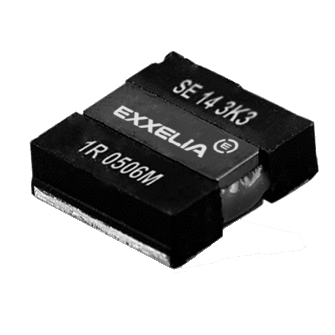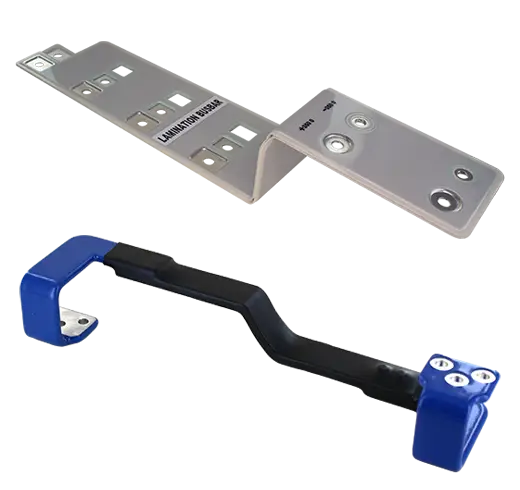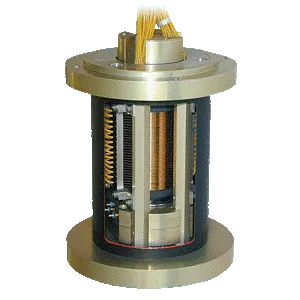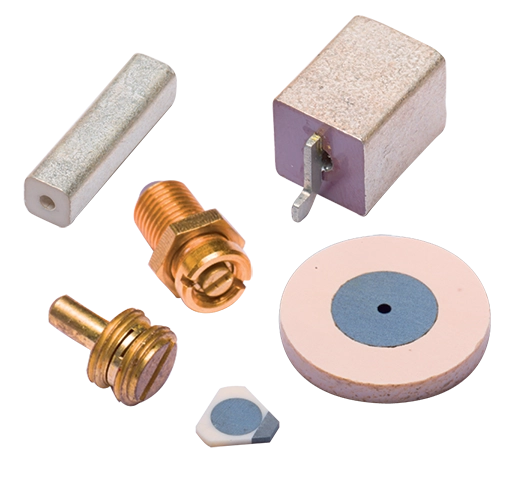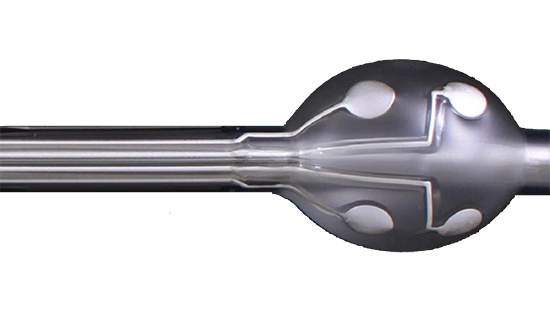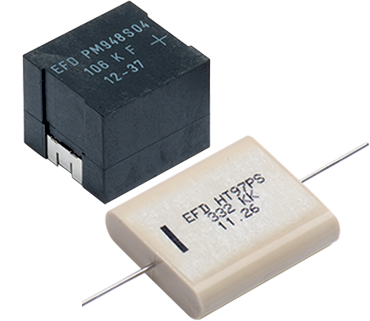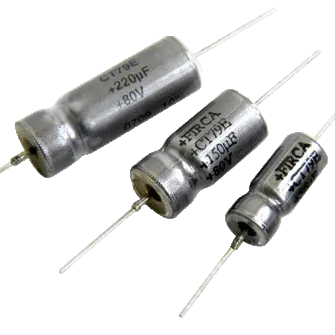

Capacitors
Choose
your product
Exxelia is a recognized designer and manufacturer of standard and custom capacitors for Aviation, Defense, Space, Rail, Medical, Telecom and other demanding Industrial applications.
Exxelia is expert in manufacturing different types of capacitors including tantalum capacitors, ceramic capacitors, film capacitors, RF capacitors and aluminum electrolytic capacitors. Capacitors designed by Exxelia meet the most demanding standards in terms of safety, reliability, performance, and quality. Exxelia's capacitors have excellent performances that guarantee high reliability and long lifetime.
100+
years old
Exxelia's oldest company was founded in 1921
13
locations
Across 5 countries: France, USA, Morocco, India and Vietnam
3100
employees
Highlighted products

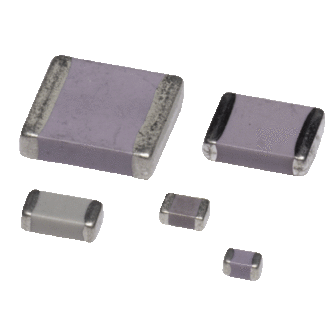
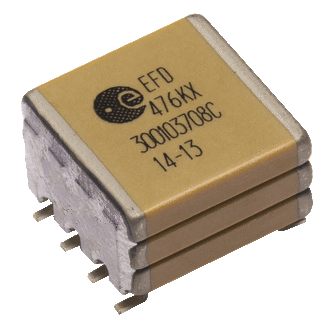
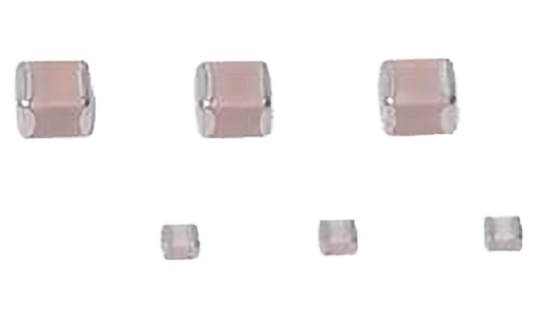
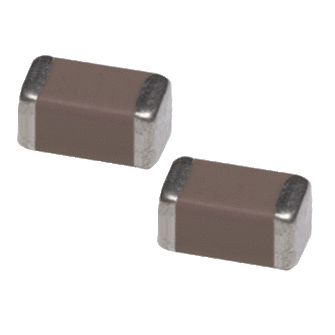
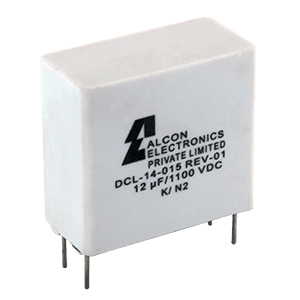
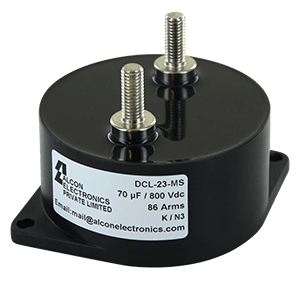
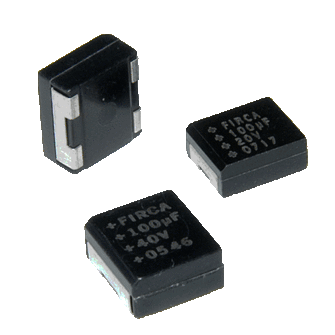
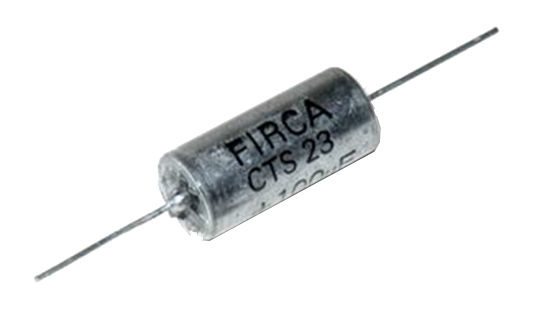
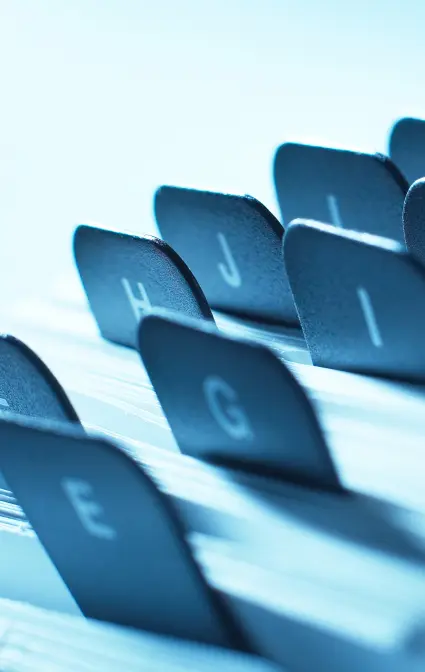
Frequently Asked Questions
The capacitor terminations are generally protected by a nickel barrier formed by electrolytic deposit. This barrier gives chip capacitors leaching performance far exceeding the requirements of all applicable standards. The nickel barrier guarantees a minimum resistance to soldering heat for a period of 1 minute at 260°C in a tin-lead (60/40) or tin-lead-silver (62/36/2) bath without noticeable alteration to the solderability. It also allows repeated soldering-unsoldering and the longer soldering times required by reflow techniques.
However nickel barrier amplifies thermal shock and is not recommended for chip sizes equal or greater than CNC Y (30 30) - (C 282 to C 288 - CNC 80 to CNC 94).
MIL-qualified capacitors meet stringent military specifications (e.g., MIL-PRF and MIL-STD standards) ensuring high reliability, durability, and performance in critical applications like aerospace, defense, and industrial electronics.
Excellent temperature resistance, high volume/capacitance ratio, electrical properties and reliability make Exxelia's ceramic capacitors ideal for a wide range of fields of application including medical implants, aircraft flight controls, switched-mode power supply in harsh environments, core samplers for petroleum exploration, and space vehicles. Exxelia also offers Hyper Frequency ceramic capacitors with optimized size and very low ESR.
These HiQ capacitors offer excellent performance levels for RF applications requiring functional reliability. Typically these applications include civil and military telecommunications (cellular base station equipment, wireless broadband service, Point to-Point or Multipoint radios, radio broadcasting equipment), and MRI coils.
Exxelia manufactures its MIL-qualified capacitors in accordance with all relevant military specifications. Capacitors are tested, marked, and validated to meet operational parameters outlined in MIL standards such as MIL-PRF-39006 and MIL-PRF-55514.
Exxelia offers capacitors with established reliability, achieving failure rates as low as 0.001% per 1,000 hours (S level) at a 90% confidence level. Other available levels include M (1%), P (0.1%), and R (0.01%).
The MML capacitors feature:
- Non-Inductive Stacked Metallized Polymer Film: Ensures high performance and reliability.
- Encapsulation: Encapsulated in a flame-retardant high-temperature epoxy resin or molded diallyl phthalate (DAP) housing for mechanical and environmental protection.
Exxelia's MIL-qualified capacitors comply with key specifications such as:
- MIL-PRF-39006: Wet tantalum capacitors for high-reliability applications.
- MIL-PRF-55514: Film capacitors for DC and AC circuits.
- MIL-PRF-83421: Metallized plastic film capacitors.
The MML Series includes several types:
- D Series (bus bars integrated for power electronic conversion or filtering)
- M Series (Small package with radial, DIL or SMD connections)
- C Series (Flat package with DIL connections)
- Custom solution with specific casing and connections to optimize the integration, the heat management and some electrical characteristics.
Each type offers various configurations to suit different applications.
MIL-qualified capacitors guarantee:
- Resistance to extreme conditions (temperature, vibration, humidity).
- Long operational life and low failure rates.
- Strict quality assurance processes validated by military standards.
Exxelia's MML Series capacitors boast several key features:
- High Energy Density and High Temperature Capability: Operates effectively up to 140°C.
- Size and Weight Reduction: Up to 50% reduction compared to traditional film technologies and up to 10 times lighers comparing to the ceramic capacitors.
- Stable Performance: Maintains consistent performance across a wide temperature and voltage range.
- Open circuit defect mode with self healing advantage
- Rugged and Lightweight Construction: Ideal for demanding applications.
- Self-Healing Properties: Ensures long-term reliability and safety.
General Electrical Specifications:
- Capacitance Range: From 1µF to 2 000µF depending on the series.
- Voltage Range: From 50V to 2000V DC.
- Operating Temperature: From -55°C to +140°C, with some derating above 125°C.
- Dissipation Factor (Tg d): Typically 60 . 10^-4
- Insulation Resistance: Minimum of 10,000 MΩ-µF at rat ed voltage and 25°C.
- Current: few Amps to hundreds of Amps (according to the capacitor construction)
MIL specifications are publicly accessible via government websites like www.dla.mil/Land-and-Maritime
Exxelia also provides guidance to help you select the right components for your projects.
These capacitors are ideal for industries requiring high reliability, such as:
- Aerospace and aviation
- Defense and military equipment
- High-performance industrial electronics
MML Series capacitors are suitable for aerospace & defense: withstand harsh environments and high reliability requirements.
- Inverter
- DC-Link
- Rectifier
- Energy storage
Yes, Exxelia offers custom configurations and extended/intermediate values upon request. This flexibility allows for tailored solutions to meet specific application requirements and could help your design with easiest integration, cost saving, thermal management optimization, sensors or filter integrations etc...
MML capacitors are tested to meet various environmental and durability standards:
- Humidity (Steady-State): MIL-STD-202 Method 103.
- Barometric Pressure (Reduced): MIL-STD-202 Method 105.
- Thermal Shock: MIL-STD-202 Method 107.
- Life Test (Elevated Ambient Temperature): MIL-STD-202 Method 108.
Exxelia has a long history providing high temperature capacitors to various industries. Several dielectrics, such as plastic (PTFE; PI; & PEI), reconstituted mica, aluminum electrolytic, tantalum and ceramic are used for manufacturing high temperature capacitors. Many are impregnated with solid thermo-setting resins such as epoxy, polyester or silicone.
These technologies provide very high stability of mechanical and electrical characteristics with temperature capabilities of -55°C to as high as +230°C, depending on the dielectric technology, and some do not require voltage de-rating. Rated voltages span from 30 VDC to as high as 60,000 VDC with capacitance ranges 100pF to 30µF.
Plastics come in such a wide range that they can cater to most of our technical needs. They can be used in high-temperature applications (Teflon), power (polypropylene), energy conversion (polyester), and for functions requiring high stability (polycarbonate).
The product range extends from capacitor outputs for implementation on printed circuits, to metal housings with terminal output for power capacitors in wired circuits. Surface mounted devices (SMD) and film capacitors withstanding high temperatures are also manufactured.
Our multilayer ceramic capacitor (MLCC) is a chip capacitor manufactured with layers of ceramic material and metal. The alternating layers can be built up to the desired capacitance range. The dielectric thickness determines the voltage rating. The capacitance is determined by multiplying the number of layers by the amount of active area and then the dielectric constant for the material. This number is then divided by the dielectric thickness. The active area is the overlap between the electrodes.
A capacitor with a thicker dielectric layer handles higher voltages than one with a thinner layer. Inversely, the thinner dielectric will have a higher capacitance rating. The MLCC design provides a significant space-saving advantage over other capacitor styles.
High temperature ceramic capacitors and high temperature mica capacitors are often used in situations that require a higher voltage or a higher power than normal. Because of the ways in which they are built, they can offer low ESR and excellent inrush current and ripple capabilities that other types of capacitors cannot. The only downside is that they tend to be physically larger than other types of capacitors.
The automotive industry is another area where high temperature capacitors are required. The temperature conditions can vary dramatically depending on what area of a car you’re talking about. The brake systems, the engine and the transmission are often the most temperature intensive areas.
Ceramic chips are created with binders and solvents added to a specified ceramic powder. The slurry created is dried, forming a sheet or tape of ceramic material. Metal powder is mixed with solvents and additional ceramic material to create a liquid electrode. The liquid is then printed onto the ceramic layer. Layers of the ceramic sheets are stacked and laminated to form a solid structure.
The solid structure is cut into the desired size. Once cutting is complete, the assembly must be kiln fired. The temperature used in the firing process is critical in determining the capacitor’s characteristics. The process is similar for disc and chip styles. Disc capacitors use long leads to mount through circuit boards. Chips use surface mount technology.
High temperature tantalum products are designed for use in situations where you might be using down-hoe drilling equipment, for example. They are ideal for this type of input and output due to their capabilities for high ripple current. They have also been known to have the additional benefit of current values that offer lower leakage compared to other types of capacitor technologies.
This natural mineral insulator has outstanding dielectric properties that are ideal for long-life high-stability capacitors with low loss at all frequencies, and high dielectric strength. This type of capacitor is used particularly for high frequency and delay line applications, oscillating circuits, emission devices and calibrators.
Mica dielectric capacitor technology allows for several custom design applications including:
- High voltage capacitors (up to 50 kV)
- High temperature capacitors (up to 250°C)
- Precision capacitors (up to ± 0.1%)
- High stability capacitors (– 20 + 30 ppm/°C)
- High frequency capacitors ( up to several GHz).
The majority of these capacitors are manufactured to comply to specifications NF-C-83120;MIL-C-5 and MIL-PRF-39001 standards.
Mica capacitors are noted for the following characteristics:
- Temperature performance
- Low loss at all frequencies
- High dielectric strength
- Stability over time
Silver mica capacitors provide superior stability and low loss when used in RF power circuits that require low pico farad (pF) and nano farad (nF) ranges. Older silver mica capacitors were manufactured in layers of mica and silver, but the layering allowed room for air gaps that reduced the stability and could also create stress fractures in the assembly.
Modern manufacturing uses silver plated to mica layers, eliminating the gaps. When the desired number of layers is obtained, the assembly is coated in an epoxy or ceramic resin. The coating reduces fracturing of the layers and seals the assembly from moisture and particles that could interfere with the capacitance value.
Mica capacitors are useful in circuits for ripple filtering and are often found in time constant, coupling or resonance circuits. In addition to radio circuits, they are used in TV transmitters and Cable TV amplification circuits. Mica is also a superior choice in high-voltage inversion and power conversion for energy absorbing snubber applications with capacitances of up to 10 nF.
Standard silver mica capacitors are normally designed to handle voltages from 100 to 1000 volts. High-voltage RF transmitter applications can call for higher tolerances. Mica capacitors are available for voltages up to 20kV.
Our expert engineering team can create the mica capacitor with the characteristics you require. Send us your drawing or file and we will work with you to manufacture the correct size, lead style and capacitance you desire.
Our high voltage capacitors are specifically designed to be able to withstand a larger amount of electrical charge than other types of capacitors can offer. They use two main mechanisms to store the energy that is being transmitted, which is contrary to the conventional dielectric method that is used with other types of capacitors. The first main method used to store electricity is called double layer capacitance, while the second is called pseudo capacitance. These methods are electrostatic and electrochemical in origin, respectively, which allows high voltage capacitors to combine the energy storing methods of normal capacitors with the methods used during the operation of a normal battery.
Our film capacitor are very specific types of capacitor that uses a thin plastic film as a dielectric element in the configuration. The thin plastic film is made using a technologically advanced film drawing process. Depending on how the capacitor needs to operate when it is finally configured, the thin material may be either left untreated or metalized after the manufacturing process.
Once the film material has been added, electrodes are placed into the assembly, which is mounted into a case that is designed to protect the capacitor from a wide variety of different environmental factors. Due to the fact that they are incredibly stable, do not cost a significant amount of money to manufacture and have a low rate of inductance, they are being used in many different types of applications. Buyer beware, there are many different types of capacitors on the Internet that qualify as film capacitors that just change the type of material being used as the dielectric.
Our high-quality polymer film capacitors, plastic film capacitors, power film capacitors and more are readily available to meet your needs. The specific type of material that will be used during the creation of the capacitor will vary depending on what the device will end up being used for. Let us know how we can help in meeting your needs and exceeding your expectations.
These capacitors offer a very high charge per unit of volume, a long lifetime and a high reliability. They are used in consumer goods and more specialized niches including space vehicles, aircraft electronics, weapons and rail transport. Exxelia develops both solid and wet tantalum capacitors.
A tantalum capacitor is a specific type of electrolytic capacitor. It is made from a metal called tantalum, which is where it gets its name. Tantalum acts as an anode. The capacitor itself is covered in a thin layer of oxide, which allows it to act as the dielectric. It is surrounded by a conductive cathode. One of the major benefits of tantalum capacitors is that their design allows for a very thin layer of dielectric, which allows for higher capacitance than other types of capacitors made from different types of materials. These types of capacitors are generally polarized, which means that in practice they can only be connected to a direct current power supply that has been designed while observing the appropriate terminal polarity. They have excellent stability over time and superior frequency characteristics when compared to different types of similar capacitors that are made from different materials.
Exxelia’s film capacitor product lines include a wide array of custom designs using state of the art technologies combined with the latest developments in dielectric films (including polyester, polypropylene, PPS, and teflon). Kraft/paper, foil capacitor, and metallized film capacitor products are available. This allows Exxelia to provide high temperature capability; high voltage ratings; precision capacitors with ± ¼% tolerances, and exceptional performance in harsh environments. Military film capacitors are tested and qualified to military standards, with more than 30 military qualified products. Film capacitors are exceptional for pulse/storage, DC link, energy discharge, and custom applications.
A wide selection of packaging designs are available such as film-wrapped, pre-molded epoxy cases, and hermetically sealed metal cases. Exxelia continues to research and develop film caps with new methods in capacitor manufacturing to provide durable designs and packaging schemes for special environmental use.
Film capacitors are used in a wide variety of different industry, including with military technology and applications as well as the aerospace industry. This is mainly due to the fact that they have high long term stability, can be produced relatively cheaply and are heat resistant.
One of the main characteristics of our film capacitor comes from the fact that they are not polarized. Due to this design element, they are available for use in both AC power and signal applications.
They are also designed to have high precision capacitance values, which means that they can retain their value for a much longer period of time than capacitors of other types. The aging process of these types of capacitors is generally much slower than it would be if a different type of material were being used during construction.
For safety purposes, these types of capacitors need to be forward biased in their configuration. This is mainly due to the characteristics of the electrolyte that has been used in their construction. The positive terminal always needs to have a larger amount of voltage than that of the negative terminal. If the situation were reversed and the negative terminal suddenly had a higher voltage than the positive terminal (which is also referred to as reversing the voltage polarity), the aluminum material that is used as the dielectric could short circuit and become damaged. It could also overheat, which could cause a substantial leak.
The capacitor could also vaporize, which could cause the entire enclosure to burst under the right circumstances. It is important to note, however, that this phenomenon is very rare.
A Class 1 ceramic capacitor is the best choice for applications that demand low losses and high stability. This style provides a reliable capacitance within the designated range of frequency, temperature and voltage. Class 2 series offer higher capacitance, but have wider fluctuations. The thermal stability varies by +/- 15 percent; these should be used in applications that do not require a continual exact capacitance. Exxelia uses NPO and P100 as Class 1 dielectrics ; and BX, 2C1 and X7R as Class 2 dielectrics.
Class 1 feedthrough capacitors offer high frequency noise reduction, and are excellent for use in microwave transmission, medical applications and DC supply and signal lines. Feedthrough design uses an axial-style lead for connections.
Aluminum electrolytic capacitors, also commonly known as just electrolytic capacitors, are a unique type of configuration that uses an electrolyte to achieve a capacitance that is much larger than other types of these devices. The electrolyte in question is usually either a gel or a liquid that itself contains a very high concentration of polarized ions. Polarization indicates that the voltage on the positive terminal is always larger than the similar voltage on the negative terminal of the capacitor.
One of the major benefits of these types of aluminum electrolytic capacitors is the aforementioned large capacitance. They do, however, have a number of disadvantages when compared to other types of capacitors. Aluminum electrolytic capacitors have a large leakage current when compared to capacitors of other types. Additional disadvantages include a limited lifetime, value tolerances and an equivalent resistance series.
High voltage capacitors can be made from a few different types of material. High voltage ceramics capacitors and metalized polyester film capacitors are just two of the main types. They are notable for a few different characteristics:
Charge time – Even though different types of technology are at work with regards to the way high voltage types of capacitors operate, they still have both discharge and charge times that are very comparable to those of regular capacitors. These charge times are possible due to the low internal resistance in the materials at play.
Specific power – Another main characteristic that sets these types of capacitors apart is specific power, which means that they have a specific power of up to ten times larger than regular batteries.
Cycle life and safety – High voltage capacitors are much safer than traditional capacitors and batteries, even when they’re being mistreated. A traditional battery, for example, has been known to fully explode if it is short circuited, experiences excessive heat or is involved in other types of situations.
Unlimited charging – High voltage capacitors can also be charged and discharged a virtually unlimited number of times. Traditional capacitors and batteries can only be charged around 500 times before they start to lose some of their original power.
Because of these reasons, high voltage capacitors made from all types of materials are very useful during situations where energy needs to be stored and released on a frequent basis.
The main goal of high temperature capacitors is to allow for stable performance of electrical equipment at high temperatures. They are also involved heavily in applications that require a high level of reliability. Though there are a wide variety of different capacitors and types of technologies that are available depending on the needs of the situation, only a few are available that can operate in a reliable way once temperatures become elevated.
High temperature capacitors made out of materials like ceramic or tantalum are usually employed when an application begins to operate at a temperature near or above 350 degrees Fahrenheit.
Still have questions ?



